
varieties
To grow vegetables in containers, look for varieties with words like bush, baby, dwarf, hybrid, tiny, and patio in their names. They are bred to be compact.
Be Creative, Be Inspired, Be Selective | M-F: 9-6, Sat: 9-5 | 937-845-0093
Growing vegetables and herbs in containers are easy and low maintenance, but there are a few guidelines. Here are some container vegetable gardening tips to get you off to a good start!

To grow vegetables in containers, look for varieties with words like bush, baby, dwarf, hybrid, tiny, and patio in their names. They are bred to be compact.
Terra-cotta pots are ideal for containers because their porous walls let air and water move easily through, so roots grow healthier.
Self-watering planters designed for urban balconies and patios extend the time between waterings.
You may want to think about appearance. What looks good with your house and other pots? Even fabric pots are good for growing vegetables. With colorful Grow Bags, you can add some whimsy to your vegetable garden.
Most importantly, you’ll need to think about the depth of the container you’ll be growing in. Plants with deep root systems will be stunted and unhealthy if they don’t have adequate space.
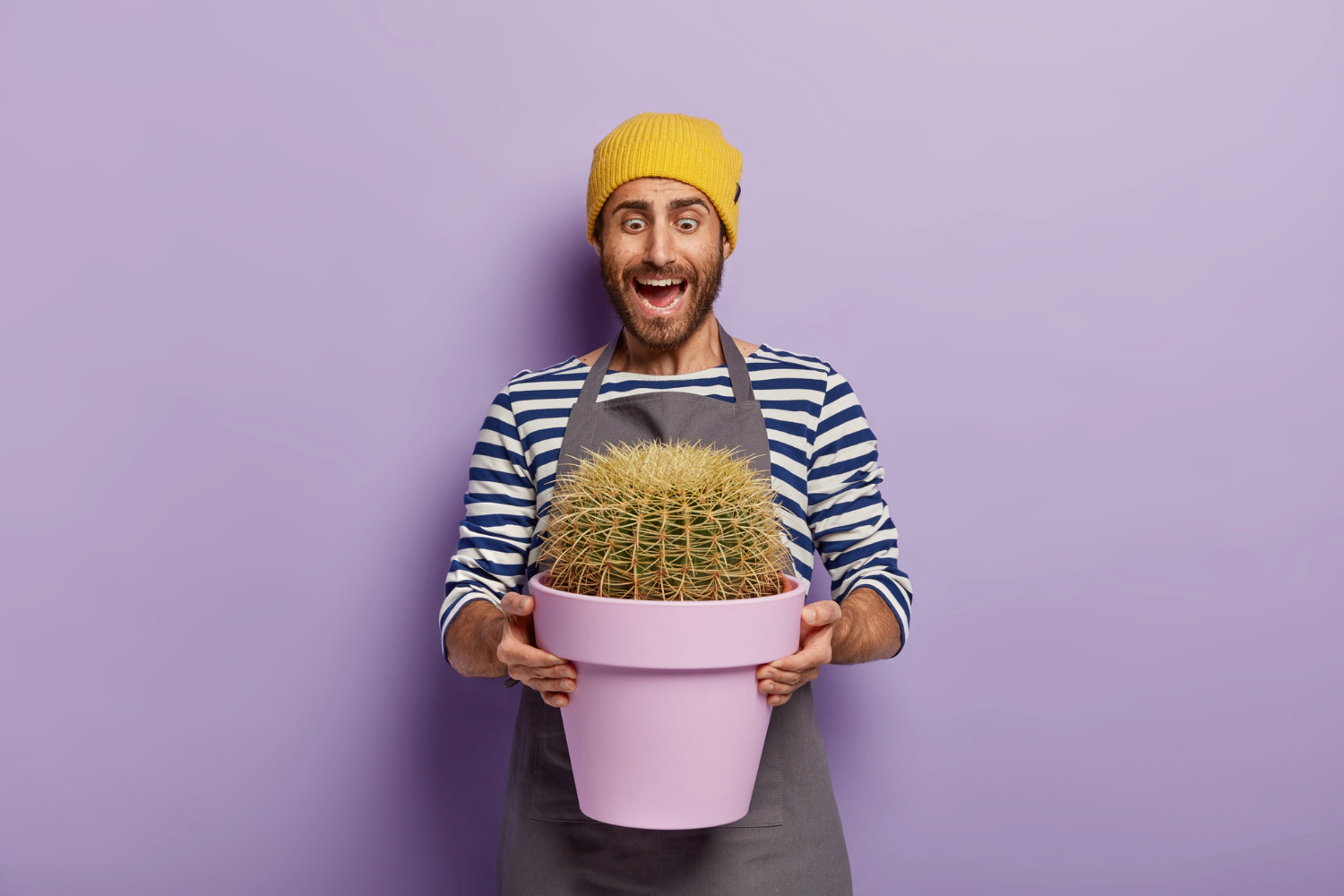

Our top picks to grow in containers are:
Beans: You can either choose a “bushy” variety of bean, which will grow happily in a pot without any extra support, or you can choose to grow a climbing variety, and run pole beans up a trellis.
This is ideal for making the most of your vertical space, as you can run them up against walls and fences.
Beets: The only consideration is that they need a fairly deep pot to be able to develop freely. A pot with 10 to 12 inches of depth is ideal to encourage adequate root growth.
Swiss Chard: Fast-growing and productive, these undisputed kings of the realm of edible potted plants make an easy and delicious potted crop.
Jalapeno Early: Jalapeno Early is an heirloom variety that blooms early in the season, which means the harvest will come more quickly for this type of pepper plant. Expect about 65 to 70 days to maturity, with good yields.
Leafy Greens: Lettuce, with its shallow root system and easy-going nature, is ideal for growing in small, shady spaces. Kale: Just three or four plants can supply a family of four with a nice weekly harvest. The main thing to remember is that your pot requires at least a 12-inch diameter, and it’s best to use a well-draining potting mix.
Sweet Peppers: Peppers need room for their roots to spread, so choose a pot at least 12 inches in diameter. A young pepper plant may initially appear small in such a large vessel, but it will fill out the container when it’s full size.
Purchase a pot with holes in the bottom, or drill your own to ensure adequate drainage. Use a plastic or metal pot in favor of fast-drying terra cotta, especially because peppers require consistently moist soil.
Tomatoes: Tomatoes need lots of sunlight, so somewhere like a roof terrace or a sunny windowsill is perfect for them. Keep in mind that they will require regular watering.
Herbs: You can grow as many types of herbs in one container as you want if they share the same sun, water, and soil preferences. For example, rosemary likes hot and dry conditions while parsley needs steady moisture. Therefore, they would not work well together in the same pot.
Plants that aren’t recommended for containers:
Large melons, corn, large pumpkins, and squash.
High-quality potting soil is important for vegetables. Don’t use soil from your garden, because it will compact in the containers and won’t drain water properly. Also, one of the reasons to garden in containers is largely to avoid dealing with weeds and soil-borne diseases. But if you use garden soil, you might be importing problems into your containers.
A container garden can be difficult when it gets this warm out as the pots have a tendency to evaporate and dry out quicker than if they are planted in the dirt. Make sure when you start that you use good potting soil and not raised bed soil, as it will hopefully retain moisture in the soil longer. Larger pots will also help, and we recommend using pots between 14″-20″ in diameter for doing edible container gardens. Mulching the top will also help with moisture, keeping the water and fertilizer from evaporating.
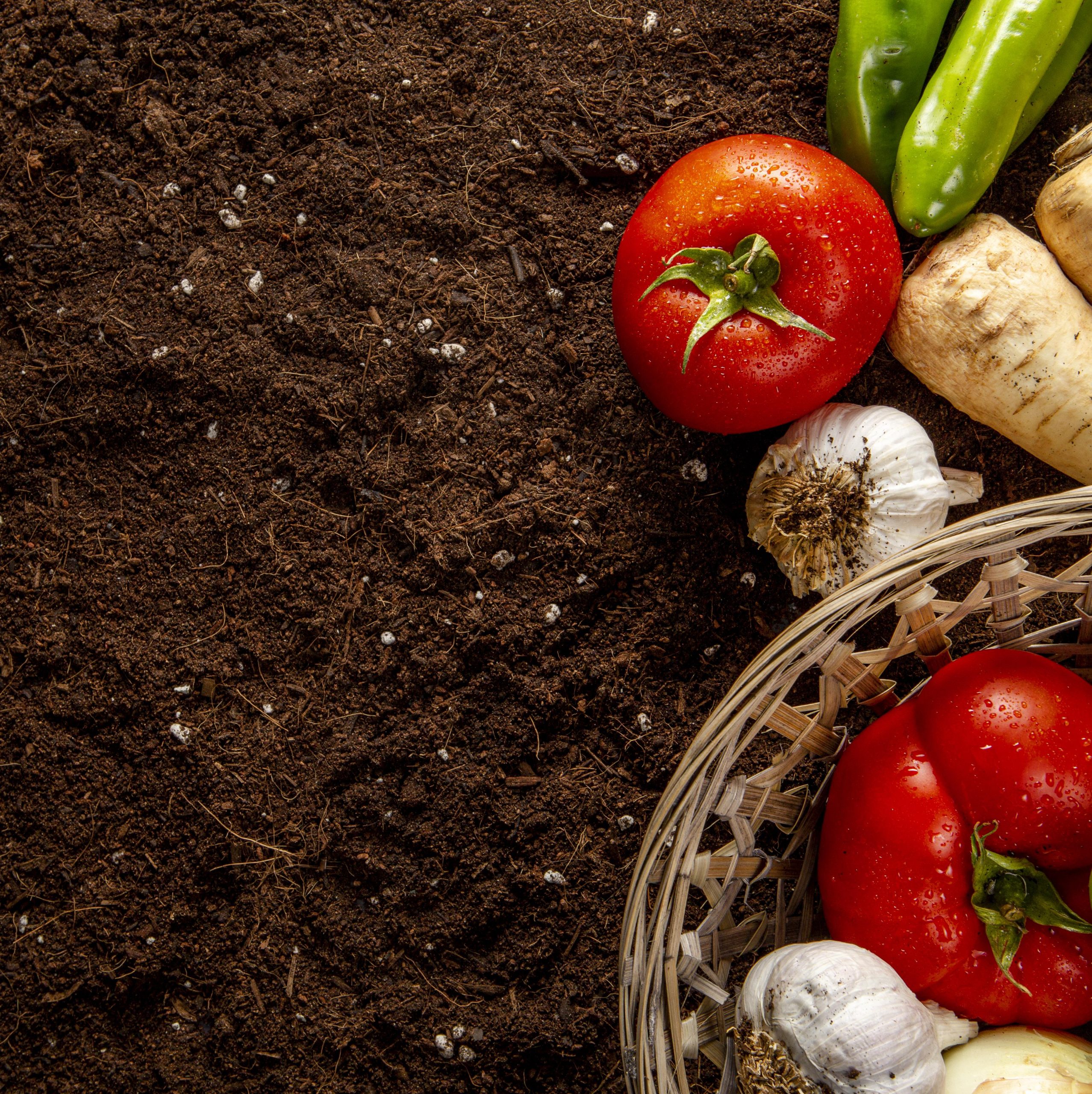
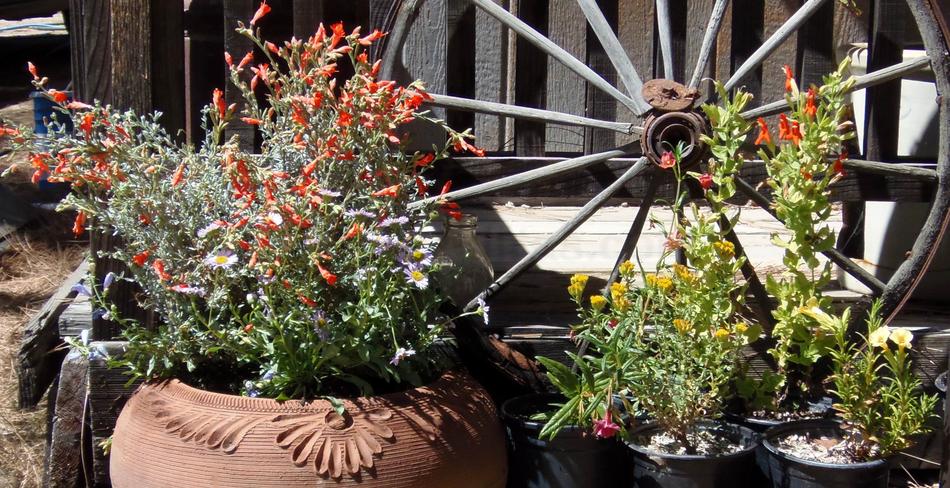
Pay attention to the sun and shade requirements of the vegetables you want to grow. We love container gardens on wheels so that we can move them around to get maximum sun each day or to shade sensitive veggies from the hot afternoon summer sun.
To figure out whether your plants need water, stick your finger down into the soil for about an inch. If the soil feels dry, add water; if you’re not sure, wait and check later in the day. At the height of summer, you’ll probably need to water at least once or sometimes twice a day. This is often the most high-maintenance and critical aspect of vegetable container gardening.
Feed with liquid plant food every two weeks for the first month then switch to a granular fertilizer, and feed monthly. Don’t forget we do give out free fertilizer water, you just need to bring in an empty container.

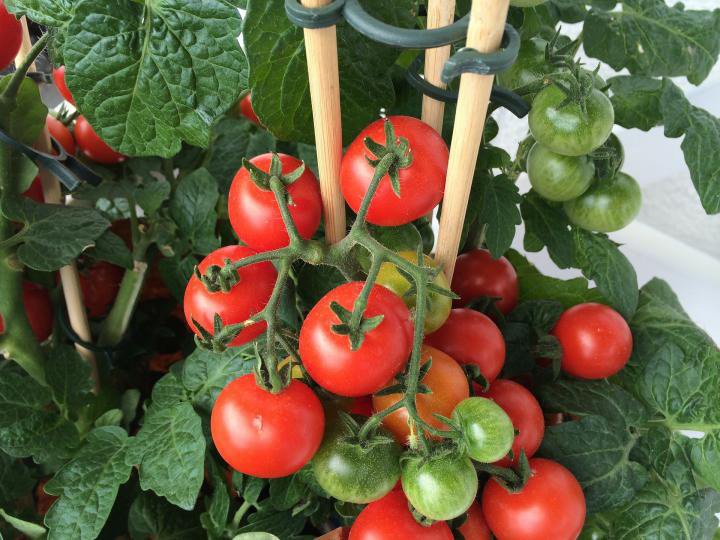
Drainage is key to keeping your plants from drowning. Your container should let excess water out of the bottom, so your plants won’t sit in overly soggy soil and succumb to root rot.2 There should be one large hole or several smaller holes located at the base of your container.
Whether you have a small or large garden, or simply a patio or balcony, container gardening offers you flexible growing opportunities. Growing plants in containers is an easy way to create instant and changeable displays right outside your back door – especially useful if you’re short on space.
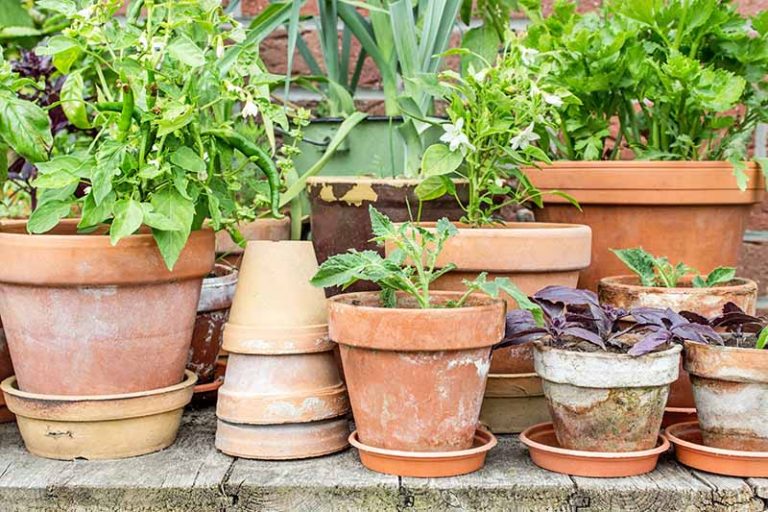

Yellowing Leaves? We recommend adding fertilizer or nitrogen to the soil. Nitrogen-deficient plants are yellow and stunted, and the fruit will be less than fertilized plants. We would recommend adding in some Garden-Tone ( 3-4-4) Tomato-tone (3-4-6) or Jack’s Tomato feed ( 12-15-30) or all-purpose (20-20-20)
Here are the minimum soil depths for healthy growth. Keep in mind that you can get by with less depth if you use a self-watering planter.
4-5″: chives, lettuce, radishes, other salad greens, basil, coriander
6-7″: bush beans, garlic, kohlrabi, onions, Asian greens, peas, mint, thyme
8-9″: pole beans, chard, cucumber, eggplant, fennel, leeks, peppers, spinach, parsley, rosemary
10-12″: beets, dill, lemongrass
Grow Your Veggies In Straw Bales:
One of the many advantages of growing a straw bale garden is that it allows you to grow a vegetable garden on any surface. Do you have a sunny driveway? Plant your garden right on top of it. Making a straw bale garden is also one of the easiest and least expensive ways to get a fairly big growing space without digging a garden. At the end of the season, as the bales kind of disintegrate, the garden looks more than a little casual.
You will need some time to get your straw bales prepped before you plant them. By adding fertilizer and water over about 10 days, the bales start to compost internally and after the heat of this process has diminished, the bales are ready to plant.
Additional Container Ideas: Baskets, hanging Baskets, Black Grow Bags, & Aqua Pots.
| Cookie | Duration | Description |
|---|---|---|
| cookielawinfo-checkbox-analytics | 11 months | This cookie is set by GDPR Cookie Consent plugin. The cookie is used to store the user consent for the cookies in the category "Analytics". |
| cookielawinfo-checkbox-functional | 11 months | The cookie is set by GDPR cookie consent to record the user consent for the cookies in the category "Functional". |
| cookielawinfo-checkbox-necessary | 11 months | This cookie is set by GDPR Cookie Consent plugin. The cookies is used to store the user consent for the cookies in the category "Necessary". |
| cookielawinfo-checkbox-others | 11 months | This cookie is set by GDPR Cookie Consent plugin. The cookie is used to store the user consent for the cookies in the category "Other. |
| cookielawinfo-checkbox-performance | 11 months | This cookie is set by GDPR Cookie Consent plugin. The cookie is used to store the user consent for the cookies in the category "Performance". |
| viewed_cookie_policy | 11 months | The cookie is set by the GDPR Cookie Consent plugin and is used to store whether or not user has consented to the use of cookies. It does not store any personal data. |